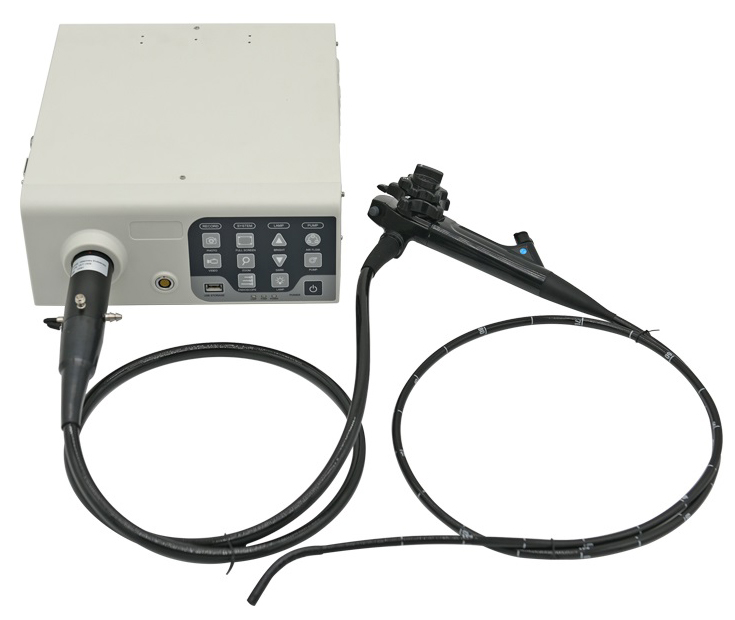After use, the veterinary gastroenteroscope must be cleaned and disinfected to avoid cross-infection, and at the same time, it can prolong the service life of the veterinary endoscope and reduce economic losses.
Cleaning and disinfection of veterinary gastroenteroscope
1. Item preparation
(1) Neutral detergent, disinfectant, water container, cleaning brush;
(2) Waterproof caps and leak detectors; waterproof caps must be covered during full immersion cleaning and disinfection to prevent water from entering the endoscope where water cannot enter.
2. Cleaning and disinfection
Washing will not achieve the purpose of disinfection. If the endoscope is to be disinfected, some materials (such as synthetic resin and rubber, etc.) used in the structure of the endoscope may cause damage when some currently available disinfectants are used. The following disinfectants have been confirmed to be safe for endoscopes when used in trials and clinical use.
(1) Chlorhexidine solution
(2) Glutaraldehyde solution (2%)
(3) Ethylene oxide gas (EOG) is below 1.5 atmospheres, and the temperature is below 40°C.
3. After the veterinary endoscope is used, immediately clean and disinfect it according to the following steps:
1. Wipe the insertion part with gauze to remove the mucus on the insertion part.
2. Immerse the insertion part of the veterinary gastroenteroscope into the washing solution, and gently scrub the insertion part with gauze or soft sponge.
3. Carry out 2 air and water supply operations (10 seconds each time), clean the water and air pipes, and then close the video center.
4. Put the head end into the water for 10 seconds of suction operation, then alternately suck air and water several times, clean the suction pipe, and close the suction pump.
5. Remove the suction button, water and gas button, and live jaw sealing valve and put them in the washing solution for cleaning.
6. Put the waterproof cap on the light guide plug, then connect the leak detector to the waterproof cap, squeeze the airbag until the pointer of the pressure gauge points to 22KP, and observe whether the pointer of the pressure gauge moves. If the pointer does not move, remove the leak tester (the waterproof cap must still be tightly covered on the light guide plug), and then immerse the entire endoscope in water to conduct a leak test.
7. Use a cleaning brush to clean the full suction line
(1) Insert the cleaning brush from the suction button mounting seat at an angle of about 45° until it protrudes from the head end. Brush the pipe back and forth more than 10 times.
(2) Insert the cleaning brush directly into the suction button mounting seat (about 90°) until it passes through the suction port. Scrub the entire pipe 10+ times.
(3) Insert the cleaning brush into the mouth of the pliers for about 10cm, and perform brushing more than 10 times.
8. Install the biopsy port sealing valve, water and gas button, and suction button on the endoscope, and repeat steps c, d, and e again.
9. Immerse the endoscope along with all buttons in the disinfectant solution. Disinfect according to the disinfection time required by the disinfectant, and put it in clean water after disinfection. Wash the outside of the endoscope and all buttons in running water.
10. Dry the endoscope and all buttons, apply medical grade silicone oil on the sealing ring of the buttons, install the buttons, and wait for the next animal to use.
11. The water and gas cylinders should be emptied and washed after the daily operation, and the surface should be disinfected with 70% alcohol.
The above is the cleaning and disinfection of the veterinary gastroenteroscope shared by Yikoda. Correct cleaning and disinfection to ensure the normal operation of the equipment.
